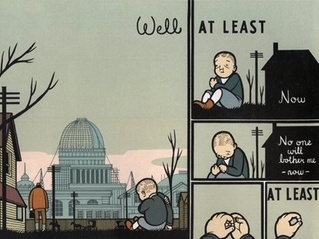|
Originally posted at Pencil Panel Page.
I don’t give much thought to page numbers when I’m reading comics simply for pleasure, but in my research and teaching, their absence can be exasperating. I can’t remember how many times I counted the 300+ pages in volumes 1 and 2 of Jeremy Love’s Bayou for an essay that I published on the series, and in the end, I don’t know how helpful my citations are for those who don’t take the time to count out each page on their own. And any instructor who has ever taught Jimmy Corrigan: The Smartest Kid on Earth knows what a bizarre experience it is to refer to Chris Ware’s pages in purely descriptive terms or in proximity to the narrative’s tiny paper cut-outs while the students flip madly through the book to catch up. The origin of this practice may be related to the history behind comics editing and printing procedures, particularly given the insertion of ads and other extra-textual material in the traditional comic book pamphlet format. In his cultural history of the medium, Comic Book Nation, Bradford Wright didn’t even bother to include page numbers in his citations, claiming that “pagination in comic books is inconsistent and generally irrelevant” (xix). |
AboutAn archive of my online writing on comics, literature, and culture. (Illustration above by Seth!) Categories
All
Archives
July 2020
|


 RSS Feed
RSS Feed